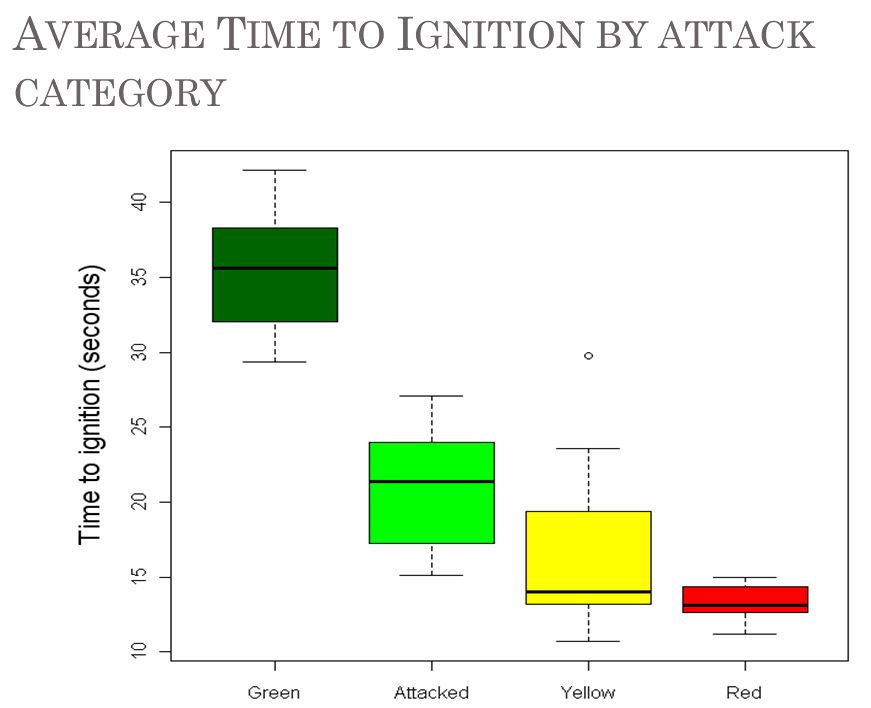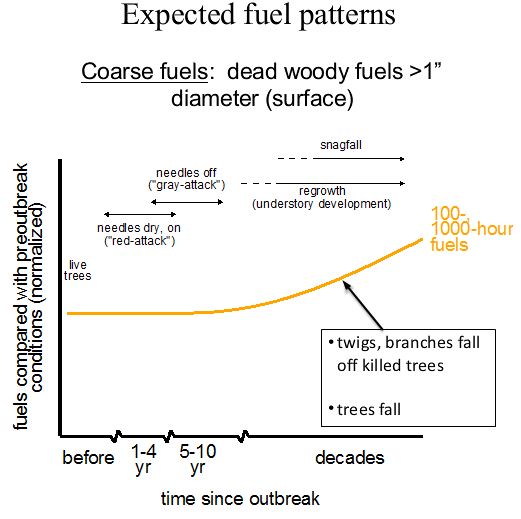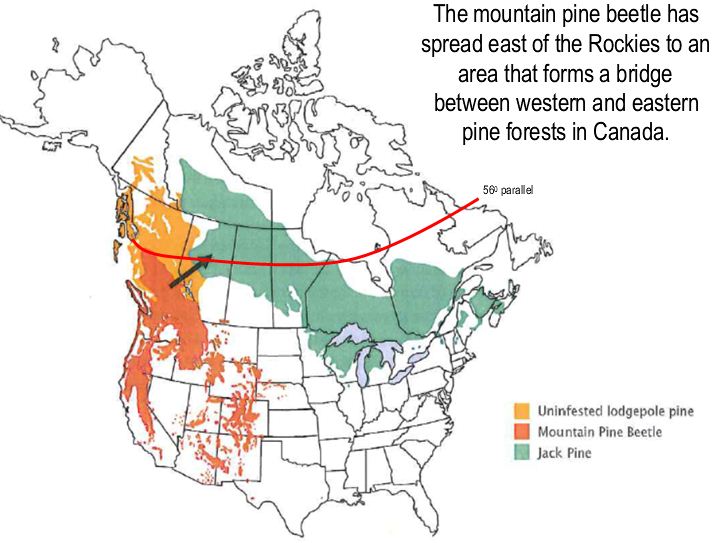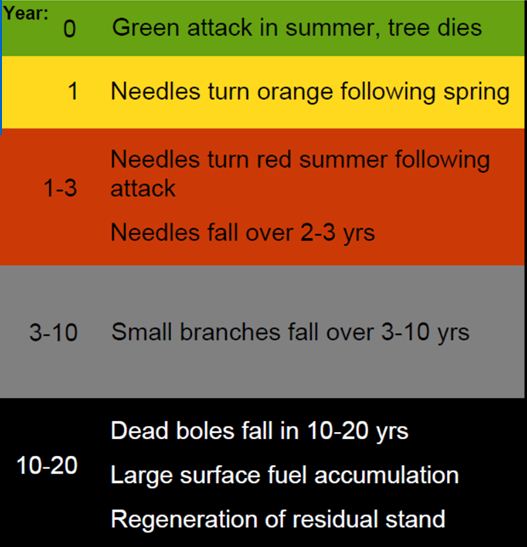The Mountain Pine Beetle and Fire forum that we told you about on April 26 is was live-streamed. I listened to a couple of hours of the forum in the morning and left with the impression that there was a consensus among those two or three presenters that:
- The dead needles following a beetle outbreak, the “red” stage, ignite more easily than green needles on a healthy tree. During this stage, lasting one to three years, an active crown fire is more likely to occur than in a healthy stand of trees.
- After the needles are shed from a beetle-attacked tree, an active crown fire is less likely to occur than in a healthy pine stand. During this stage a fire may produce larger burning embers, slabs of bark for example, that may be more likely to ignite spot fires, compared to embers from a green stand of trees.
- After the needles and some of the branches fall, and later the entire tree, the fuels on the ground are likely to be more continuous than before, will carry a fire easily, and the fire will burn with more intensity, but generally on the surface. There will be an increase in the amount of 100- and 1,000-hour time-lag fuels.
- I did not hear anyone discuss the resistance to control of a fire during the various stages of a beetle attack. But obviously, an active crown fire is extremely difficult to control, while an intense surface fire or a passive crown fire would be somewhat easier.
Below are some sample slides from the presentations.
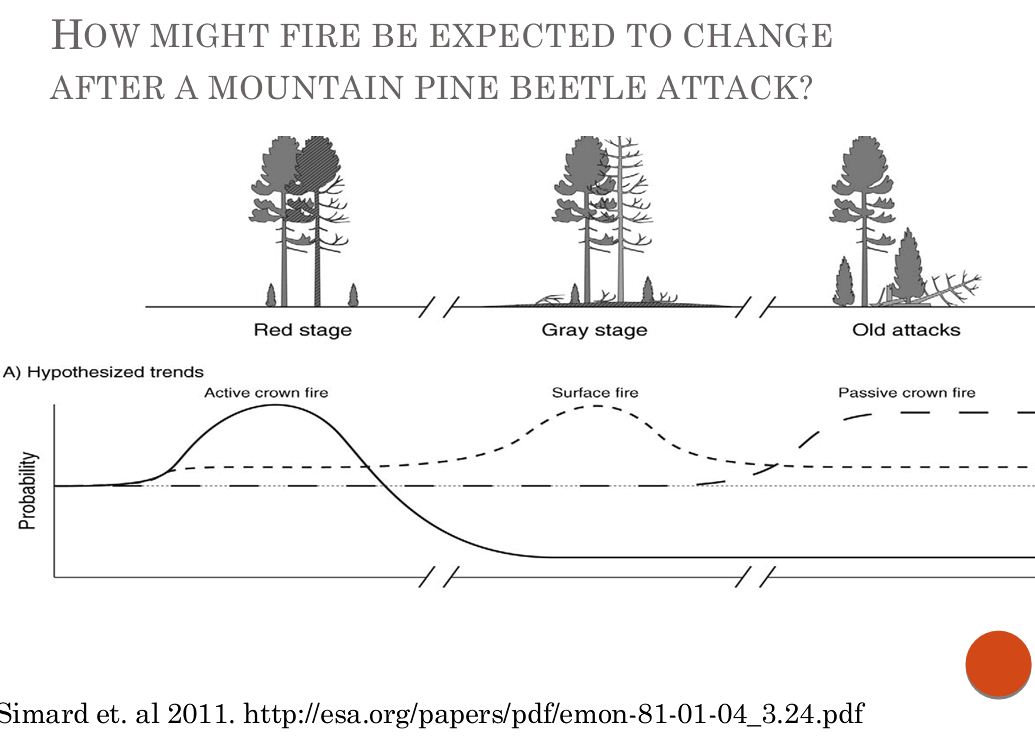
The term “gray stage” as used in the illustration above, refers to a tree that has been attacked by beetles and the needles have passed through the “red” stage and have fallen. “Passive crown fire” is defined in the NWCG Glossary of Wildland Fire Terminology:
A fire in the crowns of trees in which trees or groups of trees torch, ignited by the passing front of the fire. The torching trees reinforce the spread rate, but these fires are not basically different from surface fires.
Here are a few more slides from the forum. Unfortunately, it was not always possible to determine who the presenters were. The streaming consisted only of audio of the speakers and slides from their presentations. There was no other video.

===================
UPDATE May 5, 2011
Helenair.com has an article about the Forum.

